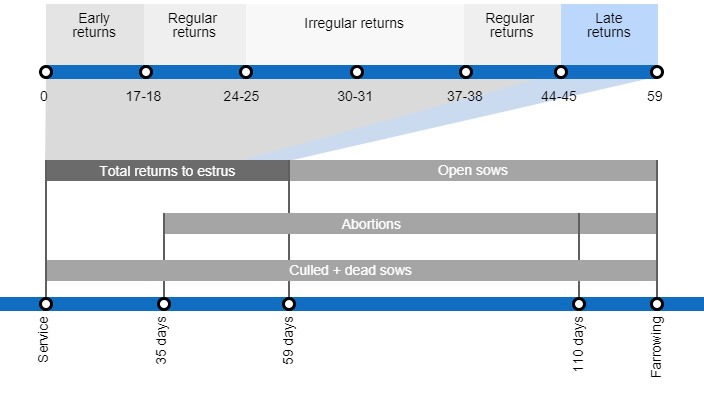Late returns to estrus occur between 45-59 days post-service.
Under normal conditions these should make up a very small percentage of the matings < 1%.

Late returns are considered separately as they may be the result of several possible factors:
- Return after an abortion that was not seen. The movement of sows to the group gestation pens once gestation is confirmed is often responsible for late embryonic losses or early abortions that result in sows with late oestrus.
- Poor detection of returns during the first month of gestation.
- Result of two regular returns in which the first one was not detected (e.g.: 23 +22 = 45).
- Result of an undetected irregular return followed by a regular one (e.g. 29 + 21=50 days).
Use the flowchart to access other parts of the tool.





